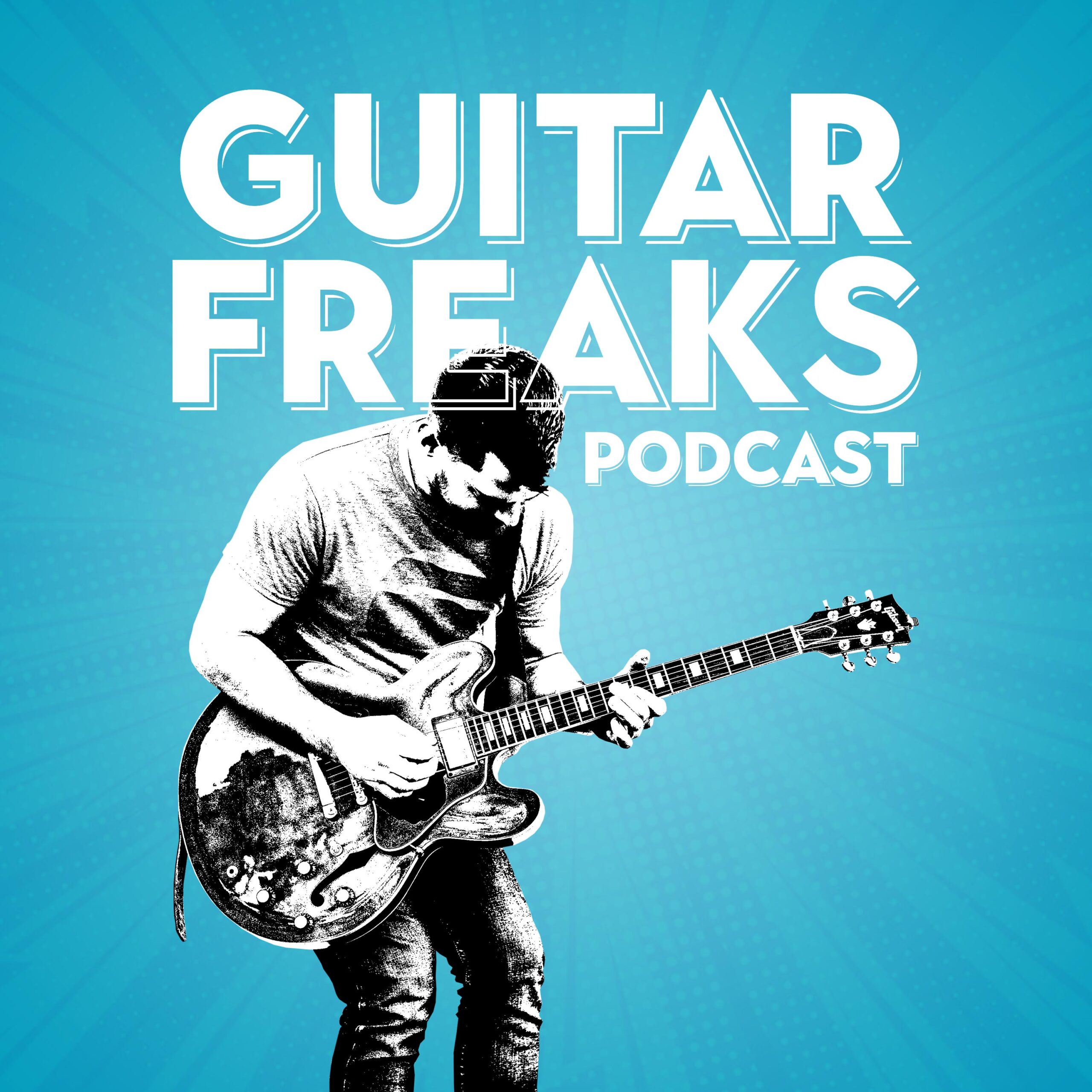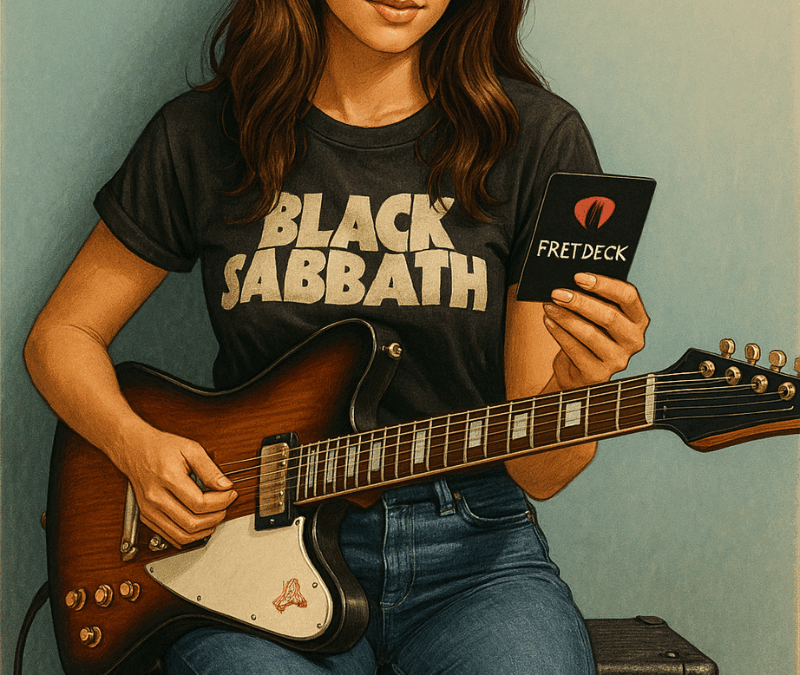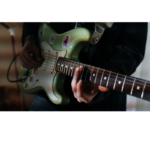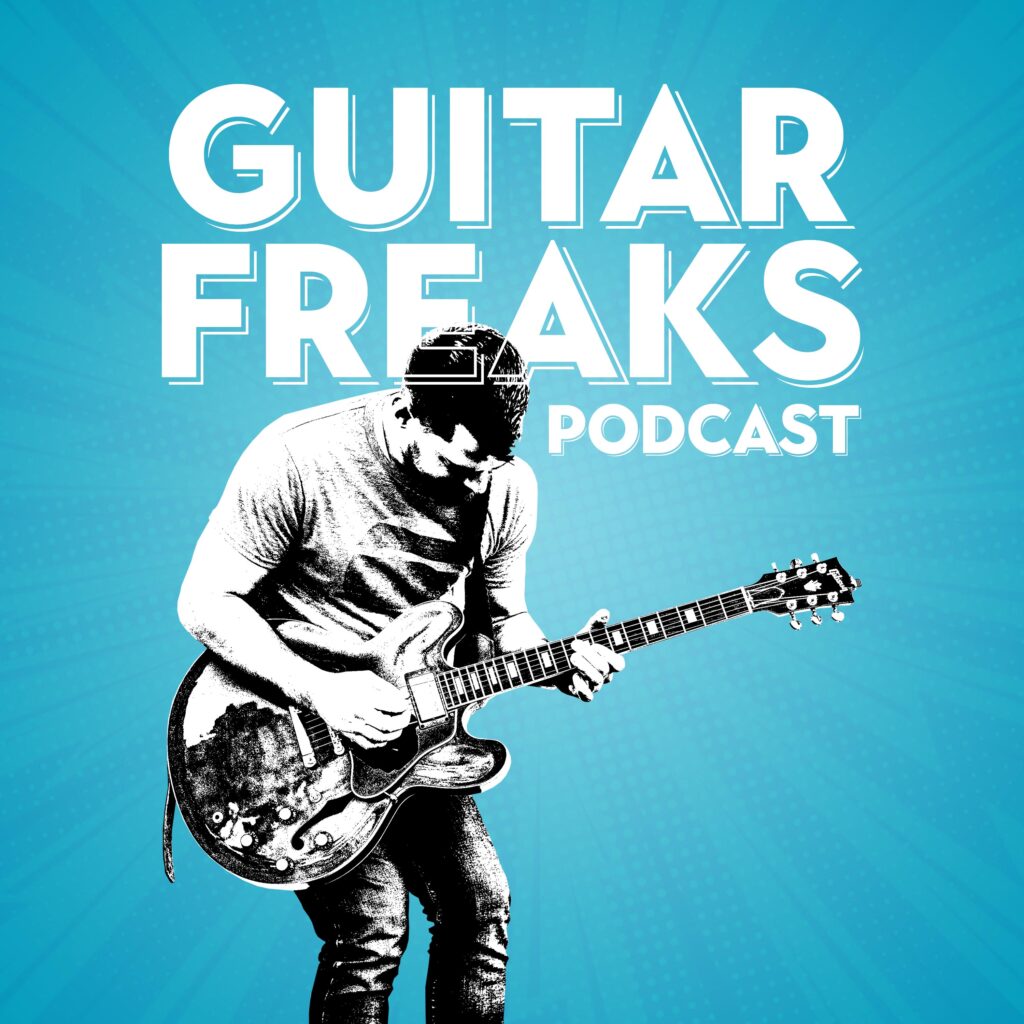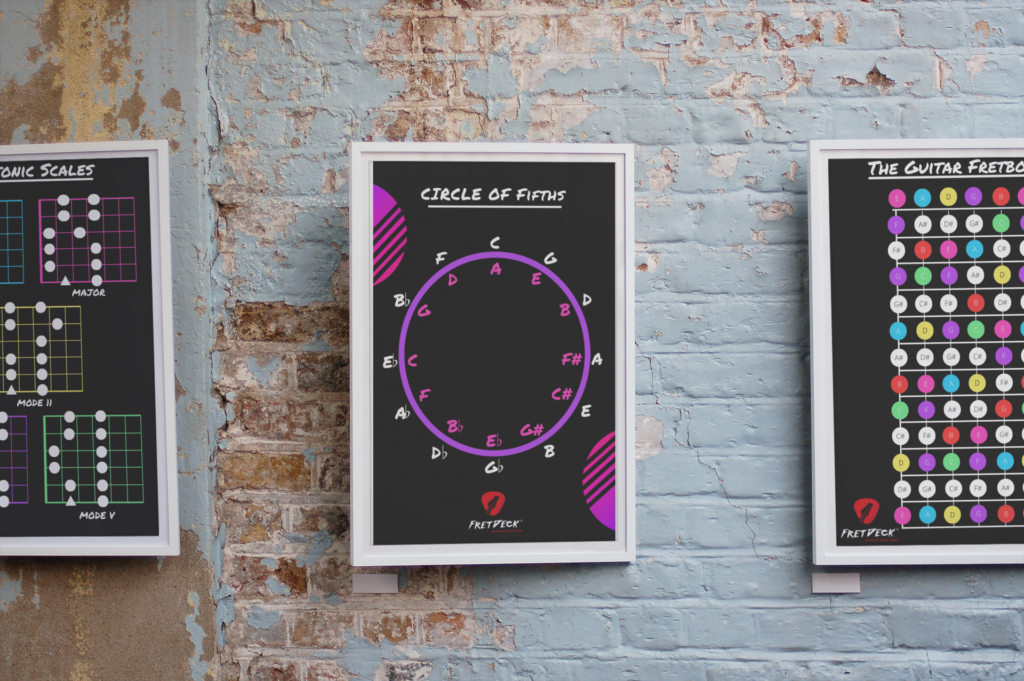“You don’t learn beginner scales on guitar to sound like a robot. You learn them to speak with your fingers.”
— Someone’s wise old guitar teacher
If you’re just getting started with beginner scales on guitar, chances are you’ve already bumped into this phrase: learn your scales. But no one really explains why scales matter. Or worse—they bury you in theory and finger exercises that kill your joy before it starts.
Let’s fix that.
In this post, we’ll walk you through the most important beginner scales on guitar, show you how to practice them musically, and give you a framework that builds your skill without burning you out.
Whether you’re playing your first pentatonic pattern or fumbling through your first solo, this is your roadmap.

❌ Stop Guessing. Start Shredding.
If you’re still fumbling through scale patterns and box shapes… it’s costing you progress.
FretDeck™ is the no-fluff system that shows you exactly how to master the fretboard—fast. Early access.
⚡️ This isn’t for dabblers. It’s for players who want results.
👉 Click here to join the pre-launch now
Early access. Limited rewards. Don’t wait.
🔥 They Lied to You—You Don’t Need 12 Scales to Get Started
Most blogs give you a buffet of scales to memorize: major, minor, modes, symmetrical, bebop, Bartókian… 🤯
Here’s the truth: you only need 2 to start sounding good.
🎯 That’s right—just two beginner scales on guitar can carry you through your first year of playing.
These are:
- The Minor Pentatonic Scale (for solos, riffs, and rock/blues language)
- The Major Scale (for melody, chords, and fretboard fluency)
And if you only had time for one?
Learn the minor pentatonic first. It’s the Swiss Army Knife of guitar vocabulary.
🎸 Scale #1: The A Minor Pentatonic (The First Scale That Sounds Cool Right Away)
Let’s not mess around. Here’s the tab:
e|------------------------5–8–
B|--------------------5–8-----
G|----------------5–7---------
D|------------5–7-------------
A|--------5–7-----------------
E|----5–8---------------------
Why It Works:
- Only 5 notes
- Easy to play (no stretches or barres)
- Sounds good even if you’re not “doing it right”
How to Practice:
- Play slowly. Use your index and pinky on the 1st and 4th fingers.
- Loop it. Up and down the strings.
- Improvise. Just start messing around. Trust your ears.
CTA: Want to master all 5 patterns of this scale—and see them mapped across your neck?
Grab FretDeck™: Pentatonic Scales on Kickstarter
Each card shows a position, a key, and how to improvise with it.
🎵 Scale #2: The G Major Scale (Your Map of Melody)
Now for the real theory-heads: the major scale is the foundation of Western music. It’s what chords are built from, and it trains your ear like nothing else.
Here’s one pattern of the G major scale:
e|---------------------------2–3–
B|---------------------0–1–3-----
G|----------------0–2-------------
D|----------0–2-------------------
A|----0–2–3-----------------------
E|--3-----------------------------
This is called the E shape major scale (thanks, CAGED system). It might feel tricky at first—but stick with it.
Why It Matters:
- Helps you understand intervals
- Builds your chord vocabulary
- Teaches you where notes live
💡 Pro Tip: Start singing the notes out loud as you play. This helps internalize pitch.
🛠️ What Most Beginners Get Wrong About Scales
Let’s pause and talk about why scales are misunderstood.
❌ Mistake #1: Thinking scales are only for soloing
🎯 Truth: Scales help you understand chord construction, melody writing, and phrasing. Every riff you love? Built on a scale.
❌ Mistake #2: Memorizing shapes but not using them
🎯 Truth: If you’re not using scales to make music, you’re just collecting diagrams.
❌ Mistake #3: Jumping to advanced modes before owning the basics
🎯 Truth: You don’t need Phrygian Dominant if you haven’t played a great lick in A minor pentatonic.
🎤 Real Talk: Beginner Scales on Guitar Should Feel Musical, Not Mechanical
Learning a scale shouldn’t feel like doing taxes.
Here’s how to turn beginner scales into music:
1. Play Over a Backing Track
Search YouTube for “A minor backing track” and jam using your pentatonic scale. Make mistakes. Try bends. Slide into notes.
2. Write a 3-Note Riff
Limit yourself. Only use 3 notes from the scale. Play a rhythm. Repeat it. Boom—that’s phrasing.
3. Connect Chords to Scales
Play an E minor chord, then solo using the E minor pentatonic scale.
Do this with G major + G major scale, A minor + A minor pentatonic, etc.
🧠 Visualize the Neck (Don’t Memorize. Map.)
Here’s where most guitarists hit a wall: they know a pattern, but they don’t know how to move it.
Enter fretboard visualization.
🎯 Want to visualize scales across the neck instead of being trapped in one box?
That’s why I created FretDeck™.
It’s a deck of 60 cards, each showing a pentatonic position, the root notes, and which notes bend well. Shuffle it. Practice it. Play it.
💥 Back it now on Kickstarter
✅ Includes beginner video lessons
✅ Join the Guitar Freaks Discord for feedback
✅ Bonus: Chord Secrets digital course for all backers

❌ Stop Guessing. Start Shredding.
If you’re still fumbling through scale patterns and box shapes… it’s costing you progress.
FretDeck™ is the no-fluff system that shows you exactly how to master the fretboard—fast. Early access.
⚡️ This isn’t for dabblers. It’s for players who want results.
👉 Click here to join the pre-launch now
Early access. Limited rewards. Don’t wait.
🧩 What to Learn After These 2 Beginner Scales
You’ve got two strong foundations now. What’s next?
Here’s a progression path that doesn’t suck your soul:
| Stage | Focus |
|---|---|
| ✅ Month 1 | A minor pentatonic + G major scale |
| 🔄 Month 2 | Add 5 pentatonic positions (via FretDeck) |
| 🎸 Month 3 | Improvise over chord progressions |
| 🎵 Month 4 | Add E minor scale, start understanding modes |
| 🧠 Month 5+ | Learn how chords are built from scales |
| 🤘 Month 6+ | Use scales to write your own riffs & solos |
🚨 No More Guessing: Join a Real Guitar Community
Let’s face it: most beginner guitarists quit because they feel lost.
You don’t need 1,000 videos.
You need a framework, some accountability, and real feedback.
Join us in the Guitar Freaks Hangout Discord.
It’s where we:
- Post practice clips
- Share riffs
- Break down solos
- Trade gear advice
- Help you stick to your practice goals
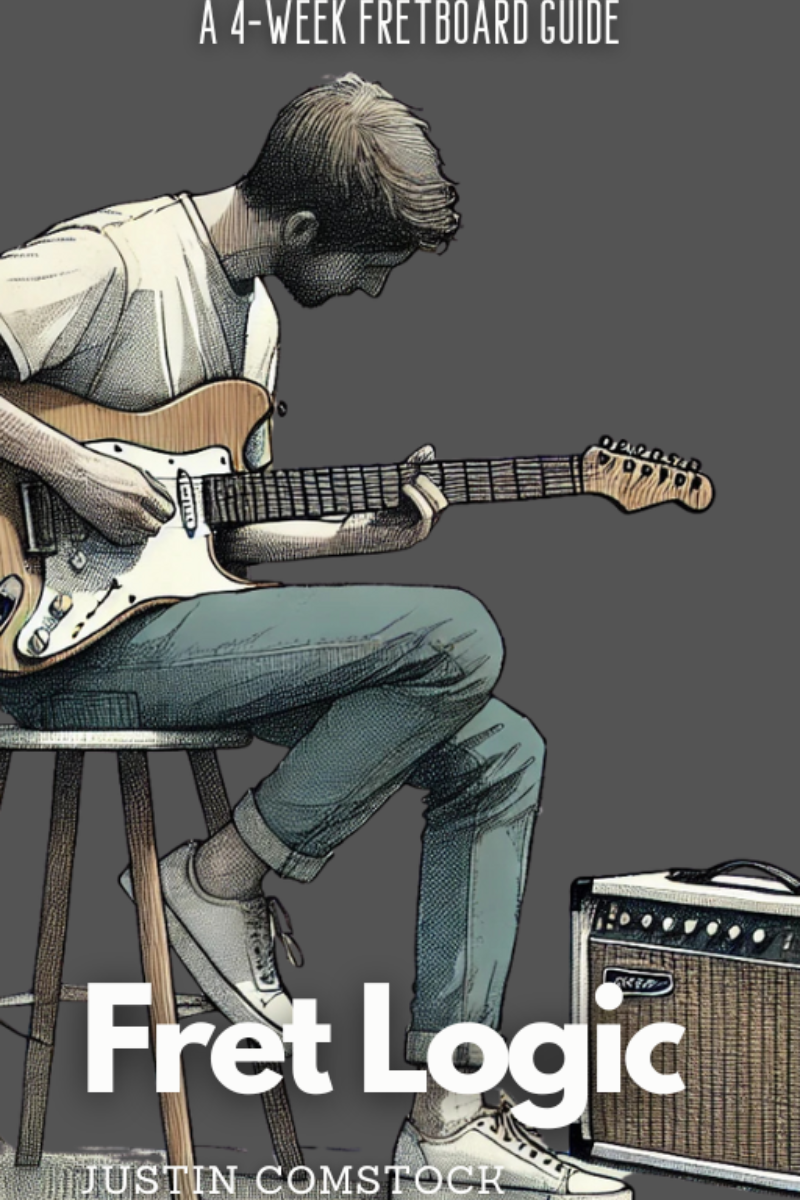
Join Guitar Freaks Hangout on Discord! 🎸
Get Fret Logic FREE!
Join the Guitar Freaks Hangout Discord and get exclusive access to my entire e-book, Fret Logic! Master the fretboard and elevate your solos with this comprehensive guide.
👉 Don’t miss out—join now and download your free copy!
🎯 Call to Action: Let FretDeck Be Your First Teacher
If you’re serious about learning beginner scales on guitar, do this:
- Back the FretDeck™ Kickstarter – Get the full pentatonic roadmap
- Use the Cards – Practice daily using the visual patterns
- Join Discord – Share your progress and ask questions
- Download the Bonus Courses – Chord Secrets and Fretboard Navigation lessons
- Stay Consistent – 15 minutes a day goes further than 2 hours on Saturday
👉 Claim your FretDeck™ now on Kickstarter
🧱 Final Thought: Build the Wall One Brick at a Time
Here’s the truth: You won’t master the fretboard in a week. But if you pick one or two beginner scales on guitar and commit to learning them deeply, you’ll be able to:
- Write melodies
- Play guitar solos
- Understand chords
- Create music that sounds like you
Start with what matters. Stick with it.
And when you’re ready to see the whole fretboard clearly, you’ll know where to go.
🎁 Grab your FretDeck™
🔗 Join Guitar Freaks Hangout
🎸 And keep your fingers on the strings.
Check out this guide to guitar chord charts to build your rhythm skills alongside your scale practice.
This JustinGuitar beginner lesson explains the minor pentatonic scale in more detail with video support.
